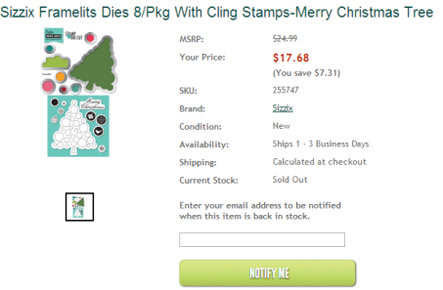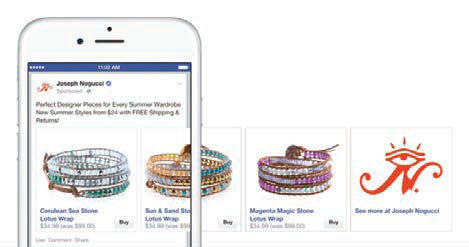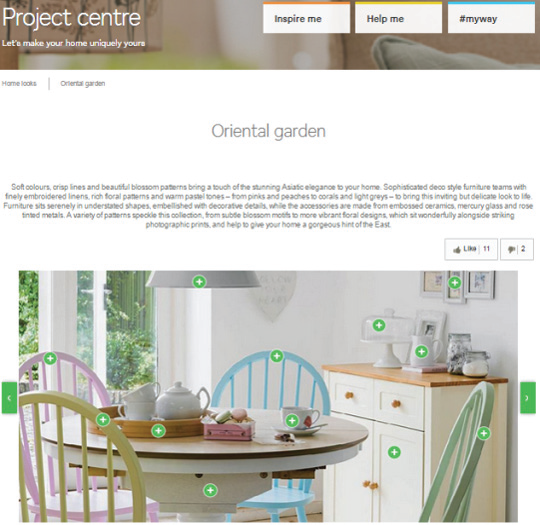Edgy & Essential Ecommerce

Retail is rapidly evolving before our digital eyes, and consumers - with their changing behaviors, expectations and tech-savvy - are leading the way both online and offline.
Internet retailers, for example, have (historically) been at an inherent disadvantage when compared to their brick-and-mortar counterparts. Despite their bigger selection, 24/7 access and competitive prices, online stores struggled to match the customer service, personalized experiences and quick, same-day turnaround local merchants could provide. Today, however, all of that is changing as a consumer's buying journey becomes less traditional - moving from a linear path to purchase (e.g. pre-website, on website, add to cart, checkout) to a nonlinear, fragmented path (e.g. pre-website, on website, leaves website, goes to a competitor's site, returns to website via retargeted ad, adds products to cart, abandons cart, checks social on smartphone, clicks back to website through retargeted email and the path continues).
Even with such a fragmented conversion path, consumers still demand consistent brand experiences across channels as well as experiences tailored to them as individuals. In fact, a 2015 MyBuys study found that 53 percent of consumers say it's important retailers recognize them as the same person across different channels and devices, while 48 percent recognize they purchase more from retailers that leverage shopper interests and buying behavior to personalize the customer experience across channels.
Many savvy retailers have already taken notice of consumers' evolving shopping preferences and are leveraging strategies and technologies that may have seemed "edgy" years ago, but are actually essential to stay competitive in today's ecommerce landscape. To keep your enterprise with the digital times, explore several ways modern Internet retailers are catering to their customers by improving the common non-linear path to purchase and, as a result, increasing conversions.
BUY @ GOOGLE
Google recently announced that shoppers will now be able to purchase items directly via Google Product Listing Ads (PLAs) from selected retailers when shopping on their mobile devices; a major development that could represent a significant advancement for consumers and a very real opportunity for retailers and brands. Learn more at "What Purchases On Google Means To Retailers."
Catering to Customers
The on- and offline shopping experiences are becoming increasingly intertwined as consumers hop from channel to channel to ultimately (at least hopefully) complete their goals. The most successful retailers are those who remove conversion barriers, allowing consumers to shop the way they want, whether that's in-store, online or a mixture of the two - all while providing a consistent brand experience. To meet consumers' expectations, many retailers have turned to technology solutions that support them in providing options like in-store pickup and ship-from-store, which give shoppers the best of both worlds. In fact, John Pincott, SVP of Europe and Global Marketing for Shopatron, notes that in today's commerce landscape retailers have a better chance to close the sale if they provide consumers with options. For instance, shoppers can buy online and still have the instant gratification of same-day, in-store pickup.
Shopatron's own research found that more than 40 percent of in-store pickup orders result in additional sales when the shopper picks up their order. Similarly, a ship-from-store feature can increase the speed of delivery, provide a broader suite of inventory to fulfill online orders, increase customer satisfaction and drive loyalty.
"By providing these advanced order management solutions, consumers can choose the buying path that best suites them," said Pincott. "You are no longer providing a "one-size-fits-all" type of buying experience. It's personalized to each consumer, which will ultimately create more repeat customers and lessen the likelihood of them searching for another merchant."
In addition to advanced order management solutions, savvy retailers are catering to customers with tools like back-in-stock notifications. With this type of functionality, retailers can encourage shoppers via email to revisit their website when the desired item is back in stock. In the process, merchants win-back what could have been a lost sale.
To provide this advanced functionality, retailers must have the right technology in place, like one which automates inventory emails. One such solution is InStockNotify for Bigcommerce stores, which replaces out-of-stock copy on a product page with an email field, so website visitors can leave their contact information to receive back-in-stock messages when the product is available again (see image).

In addition to logistic and product page features that cater to consumers' changing expectations, retailers can further bridge the brick-and-mortar gap by honing in on their online customer service initiatives.
Cross-Channel Customer Service
Since consumers move from websites to social networks to mobile applications (and any combination of channels) during their shopping experiences, online retailers may want to consider adding a technology solution that can help them answer customer questions in the moments that matter the most.
Live chat is one of the more popular solutions for providing cross-channel customer service. In fact, a recent survey from Software Advice found nearly 60 percent of millennials prefer live chat over phone. What's more, Karl Pawlewicz, of Olark, notes that offering live chat can be instrumental in instilling trust.
"(Live chat) helps new customers get answers they need to buy with confidence," said Pawlewicz. "They ask questions like, 'How does this fit?'; 'When will this ship?'; or 'What's your return policy?' If you can answer questions like these at the right time, you increase the likelihood of closing the sale and gaining a returning customer. For returning customers, live chat is all about convenience. They know they can use chat to accomplish something quickly, like place a repeat order, or update their account, and they can do it without breaking away from what they're working on."
Today's savviest retailers are offering much more than just chat windows on their ecommerce sites though. In fact, many live chat solution providers are giving retailers the ability to incorporate live chat into their mobile sites and apps, as well as offering self-service options for websites. TouchCommerce, for instance, not only offers mobile live chat support, but also a service called TouchConnect that enables service agents to use features like co-browsing and content sharing in hopes customers will be more inclined to use self-service options, rather than calling a traditional help line.
To implement a true omnichannel customer service initiative, retailers must also take social media into consideration. This is an area of opportunity for retailers who want to separate themselves from the competition, as a recent survey from The Northridge Group reveals that 33 percent of consumers who contact brands with a customer service question on social media never get a response. While some social media management platforms like Sprout Social can be leveraged to assist teams with social customer service initiatives (read more at "Sprout Social Helps Brands Improve Customer Service"), there are also solutions available from brands like SnapEngage, which offers a Facebook Fan Page Chat feature that enables retailers to chat directly with their fans and followers on the social network.
Catering to customers with modern shopping tools and customer service initiatives is definitely essential in today's ecommerce landscape, but there are other ways retailers can improve their omnichannel ecommerce presence to give consumers a better and more "connected" experience no matter where they shop.
Blending Physical and Digital Retail
Establishing a true omnichannel plan comes with its fair share of challenges. In fact, 2014 data from eMarketer reveals 37 percent of retailers feel as if they are lagging when it comes to implementing their omnichannel strategy. When devising a plan, retailers should focus on providing consistency and convenience across channels.
"It's not about selling online vs. selling offline," said Pincott, of Shopatron. "It's about selling where the consumer is. Sometimes consumers are online, sometimes offline, and more often than not they are online while in-stores."
At the beginning of the mobile evolution, many retailers were wary of shoppers who leveraged their mobile devices while shopping in-stores due to a trend known as "showrooming."
Many traditional retailers perceive showrooming as a practice that could hurt their bottom line, as they fear consumers who use mobile devices in-stores are checking out products and will later convert online with a competitor (like Amazon) who has listed the item at a lower price.
As mobile has continued to mature, however, data shows it is not necessarily a bad thing for merchants when customers leverage their smartphones in-stores. A 2014 study from Deloitte Digital, for instance, reveals that consumers who use a device during their shopping journey convert at a 40 percent higher rate. With statistics like this, it is no surprise that savvy retailers have embraced mobile-connected shoppers by implementing price-match strategies and other tactics to help them combat the digital competition and link the physical and digital shopping experience beyond features like in-store pickup.
Retailers like Best Buy, for example, offer QR codes in-stores so customers can easily learn more about products and access customer reviews. Additionally, retailers like Nordstrom have decided to highlight popular Pinterest products in-stores with signs that label specific items as "Top Pinned Items." Another way retailers are intertwining the physical and digital shopping experiences, however, is with offerings such as CloudTags, a solution brick-and-mortar retailers can leverage to create a "connected" store. Upon entering a participating retailer's shop, customers are offered a CloudTags-enabled tablet that they can use to learn more about products during their shopping trip.
Furniture retailer American Signature leveraged the solution in four of its Value City Furniture stores near the company's Ohio headquarters. When shoppers browse the retailer's brick-and-mortar stores with the CloudTags-enabled tablet, they are able to tap on special product tags placed on pieces of furniture.
Using digital sensors and near field communication (NFC) technology, the tablet is able to offer detailed content to shoppers, including product features, reviews, real-time availability information, delivery dates and related online-only products. Moreover, CloudTags analyzes the items each shopper interacts with in order to deliver personalized product recommendations and alerts. It is also important to note that customers are not required to log in or register when leveraging CloudTags, but are able to opt-in later.
"By letting shoppers opt-in with their email address at the end, we are able to treat the shopper the same way they're treated on a website," said CloudTags CEO James Yancey. "Most shoppers browse and research before they enter the store, but they are unknown to the retailer when they walk through the door. With CloudTags, these shoppers can choose to engage with the brand and jumpstart a digital relationship that spans brick-and-mortar, online, email and mobile."
Once a shopper opts-in, a profile is created or associated with an existing profile in the retailer's customer relationship management (CRM). In the case of American Signature, 95 percent of the customer emails collected were previously unknown to the brand. After opt-in, retailers can retarget shoppers online with products they browsed in-stores.
"We really understand that the shopping journey for a large-ticket item begins with a need and starts online," said George Vernadakis, vice president of ecommerce and emerging technology at American Signature. "Customers go online to find a brand they trust and products they like, and to narrow down the list of stores they want to visit. Then they visit the stores and start making purchase decisions. Often, the last store wins the sale. CloudTags makes it easier for in-store shoppers to convert in the channel of their choice (online or in-store). They have all information they need, and the ability to save it and share with a significant other once they're back at home. They don't have to return to the store to make the purchase."
Connecting the in-store and online shopping experience is one way to step up omnichannel initiatives, but retailers should also consider making it easier for consumers to shop in other channels, such as social.
Supporting Sales on Social
Retailers have been looking for ways to sell inventory via social media since the inception of Facebook and Twitter - typically without much luck. Retailers are fixated on social commerce because these networks are leveraged every day by consumers, with Pew Research revealing 71 percent of Internet users were on Facebook in 2014.
This provides retailers with an opportunity to put their products in front of a large audience and allows selling within environments where customers are already active. Fortunately, significant strides have been made in the social commerce arena in the last two years with social networks like Facebook, Twitter, Tumblr and Pinterest all offering new tools to make shopping easier on their respective platforms (get a roundup of the 'Net's latest social commerce updates).
What's more, technology companies like Shopify and Curalate are also offering tools to assist retailers in their social commerce initiatives. For instance, Shopify and Facebook recently expanded their beta test allowing additional Shopify retailers to sell on the social network via Facebook's "Buy" call-to-action (CTA) that was launched in Feb. 2015 (see image).

The feature enables retailers to display and sell their products on consumers' News Feeds and on Pages without requiring the consumer to leave the social network (learn more at "Shopify Deepens Its Ties With Facebook"). This is a big step for social commerce on Facebook, because before the social network unveiled the Buy CTA, retailers had to leverage a solution like Ecwid for their social selling initiatives. While Ecwid is a popular shopping cart solution, its social selling feature requires consumers to visit the retailer's Facebook Page in order to shop rather than displaying the shoppable products where consumers already are - their News Feeds.
In addition to Facebook, merchants can take steps to sell on other popular social networks, including Instagram and Wanelo. Curalate, for instance, offers a solution called Like2Buy that retailers can leverage to make their Instagram feeds shoppable. With the solution, retailers can feature a short link in the "about" section of their social profile, which connects photos from the retailer's Instagram account to products available on the retailer's ecommerce website. Wanelo, on the other hand, is an emerging social discovery site that receives 1 million unique visitors a month. To access this customer base, retailers can add the Wanelo save button directly to their product pages with just a few lines of code. Additionally, Shopify retailers have the ability to sell directly on the discovery platform via an app built specifically for Shopify.
It is safe to say that social commerce will continue to evolve in the coming years, and the savviest retailers must stay up-to-date with these advancements in order to reach an expansive and active audience. That said, retailers should also pay attention to their content marketing initiatives, as many consumers need inspiration before conversion.
Inspiring Digital Conversions
E-commerce sites are conventionally inventory-driven, essentially acting like digital catalogs where consumers can browse through inventory, read descriptions, view product images and discover other consumers' opinions. While all of this information is important, retailers can take additional steps to increase conversions by delivering content that encourages action, promotes upselling and highlights product usage. When adding inspirational content to an ecommerce site, it is important retailers feature this marketing material in a way that isn't too distracting. After all, some consumers know exactly what actions they want to take when they arrive at an ecommerce site, while others may need a virtual "push."
Increasingly, retailers are leveraging user-generated content (UGC) to inspire their customers' purchasing decisions. Apparel retailers, such as The Limited, use visual commerce platforms like Olapic to feature shoppable photo galleries on their ecommerce websites. Through the technology, The Limited is able to curate, approve and publish social content from customers who have used one of the retailer's branded hashtags. To make conversion easier, some of the UGC features a "Shop Now" CTA when clicked on, which makes it simple for consumers to take action once they have been inspired to purchase (read more about ways to inspire purchases with content).
Aside from UGC, however, retailers can inspire by carefully positioning content like articles, blog posts and guides on their ecommerce sites. Take online retailer Homebase as an example. The company, which is based in the UK and Ireland, was tasked with finding a way to not only inspire its website visitors with decorating and do-it-yourself (DIY) project ideas, but also with informing consumers how to use products to see their home improvement ventures come to life. To do so, Homebase leveraged CoreMedia's digital engagement application dubbed LiveContext 2.0.
Combined with the IBM WebSphere Commerce (WCS) platform, LiveContext is able to provide Homebase's online marketing team with enhanced control of digital content, including promotional pages, inspirational guides and microsites. This enables the retailer to deliver blended content objects that take real-time product and pricing data from IBM WCS and combine it branded content. For instance, Homebase features a "Project Centre" section on its site that is made possible by CoreMedia. This section is essentially a content hub that aims to inspire consumers with articles that include design ideas and advice. Some of the content is also interactive and conversion-driven, enabling consumers to click on small, green plus signs to view a product window with real-time pricing (see image) and a CTA to click-through to the product page.

Retailers should keep in mind that inspirational content, regardless of the form it comes in (e.g. video, UGC, blog posts, etc.) can be a very important part of a customer's path to purchase. In fact, the savviest retailers are using content as a tool to give consumers the virtual push they need to get out of the research stage and into the conversion stage.
The New Path
Retailers should embrace the nonlinear path to purchase because it is quickly becoming the industry's new normal. The only way to do so, however, is by establishing an omnichannel strategy that delivers consistent experiences to customers across channels. After all, the strategies retailers use to see as "edgy," are now essential to stay competitive in today's fragmented marketplace.








